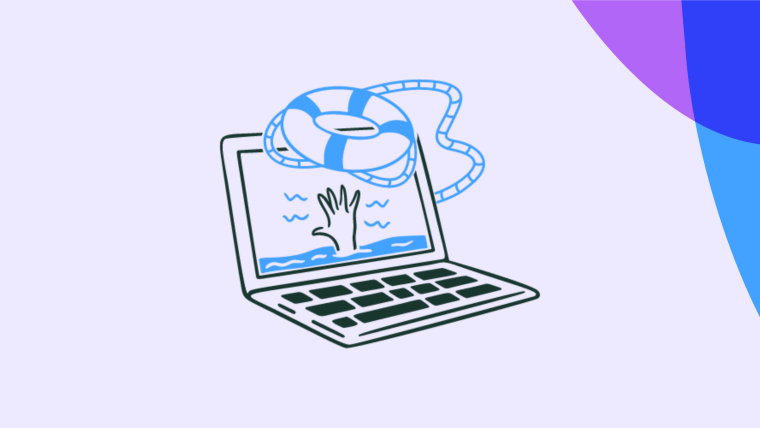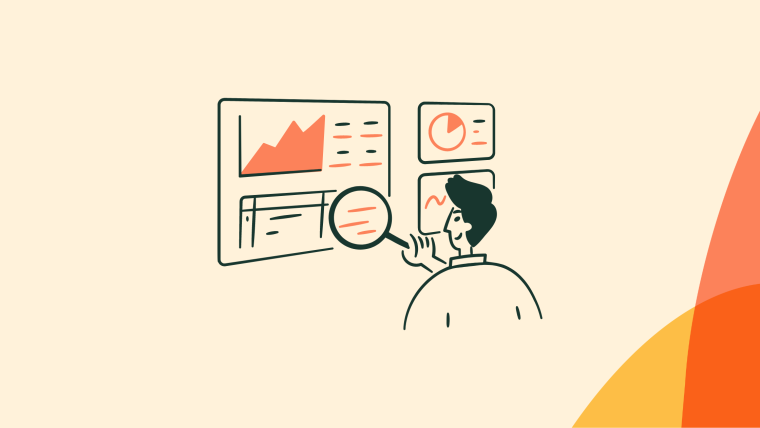Great customer support involves providing the right information at the right time. But overwhelming amounts of help content doesn't necessarily make a user more successful with your product. In fact, poorly structured help content creates a massive user experience design problem.
To be successful, the information needs to provide value. However, you have multiple kinds of users at different stages of the customer lifecycle. Their individual definitions of “value” will not be the same.
To figure out how to provide high-value help content to your users, you can't just bombard them with content. Instead, you need to define two separate categories of in-app user support help: push help and pull help. By understanding the difference between them and learning why they matter, you'll help users actually master your product.
In this article, we guide you through in-app user support and the best push and pull strategies.
Effective in-app support balances push help strategies to proactively deliver guidance and pull help strategies to help users find resources independently
Examples of push help include in-app notifications, tooltips, and guided walkthroughs
Examples of pull help include FAQs, help centers, and self-service portals
Best practices for delivering push and pull help strategies successfully include:
Segment users with targeted help
Be timely with push help
Provide clear, accessible pull help resources
Maintain a balance to avoid overload
Use automation for consistency
Encourage feedback to improve help systems
What are push and pull help strategies?
At Chameleon, we categorize our help systems into two camps:
Push help, where we nudge users to learn about the product who wouldn't have done so on their own. This can be through in-app notifications, tooltips, and customer walkthroughs.
Pull help, where users can self-serve and access information from easy-to-find repositories of knowledge. Through FAQs, knowledge bases, and help centers, customers can get the answers to their problems at their own convenience. It’s more of a “here are the answers if you need them” approach to customer help that fosters independence.
The major difference, which will inform what is relevant and actionable, is whether the user asked for help themselves or whether you nudged them to use help.
Here’s a quick look at the two approaches:
Aspect | Push help | Pull help |
Examples |
|
|
User initiative | No initiative as assistance is delivered automatically | Requires user initiative to find and use provided resources |
Timing | Real-time | Whenever the user needs assistance |
Bet use cases |
|
|
You need both of them to effectively help customers resolve their issues so that they can continue using your product. Think of them as the yin and yang of customer help.
For example, power users may have very specific needs and are likely already highly engaged, so you can allow them to seek out help as they need. This means you clearly signpost how they can learn more or get in touch. On the other hand, a newbie may be lost, and need some guidance, maybe in the form of a product tour.
With user segmentation, you can provide push and pull help at the right times.
8 Examples of push and pull strategies
The best way to learn push and pull strategies is by observing what works. Here are eight examples of masterful push and pull strategies by world-renowned brands that you can add to your help system.
1. Slack’s product tours and tooltips for onboarding (Push help)
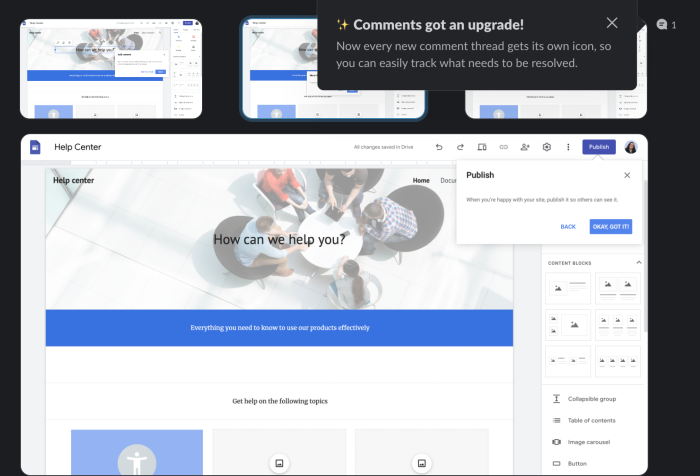
Whenever a user signs up or a new feature is announced, Slack swoops in with helpful yet invasive product tours and tooltips to gently nudge users in the right direction. These in-app push help strategies define the feature and explain how it impacts the user.
Why it works?
Offers immediate guidance for new features that are relevant and timely so the user isn’t confused by changes in the product
Concise explanations lower the cognitive load for users, making it easy to understand the feature
Highlighting new features like Slack does, encourages users to experiment and include them into their workflows, driving feature adoption
2. Shopify’s knowledge base for self-service (Pull help)

If users are feeling stuck while building their commerce business, they can always enter the help center and read up on both general ways to use the platform, alongside specific features. Plus, if the user is still having a hard time getting around, there’s an in-app messaging feature for additional support.
Why it works?
Shopify’s help center serves as a comprehensive resource where users can dig in and brush up on their knowledge to effectively use the platform
It reduces friction by giving users the information they need whenever they need
Shopify’s in-app messaging feature embedded in the help center provides an easy and frictionless transition into a push strategy for more complex issues. If you’re unsure whether to use push or pull strategies, your users can decide which method suits them best.
3. Maze’s lifecycle emails to engage users (Push help)
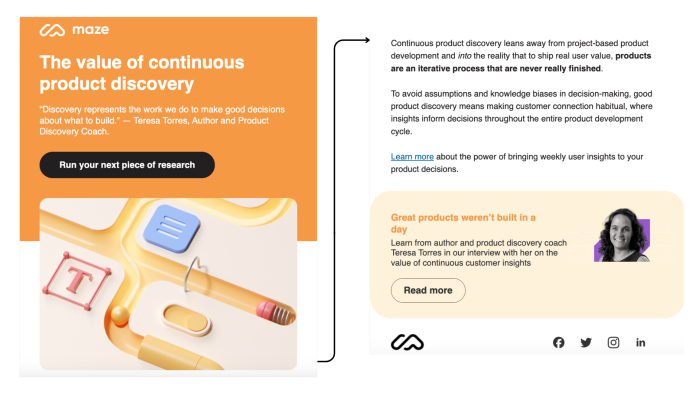
Maze sends lifecycle emails to proactively engage users, offering valuable content and nudging them to take action. These emails guide users to stay connected with the platform and explore new resources. For example, the email above promotes continuous product discovery and invites users to learn more through expert interviews and actionable insights.
Why it works?
Sends personalized, contextual content that aligns with where the user is in their journey
Includes valuable resources to help users maximize the platform’s benefits and overcome obstacles
Acts as a proactive engagement tool, re-engaging users and driving further interaction with the platform
4. Basecamp’s explainer videos for feature discovery (Pull help)
While help centers where users can read up on features are definitely effective, Basecamp takes a different approach. They provide users with explainer videos, overviews, and product demonstrations, making it easier to get help using the platform if they need it.
Why it works?
Many of Basecamp’s explainer videos are on Youtube, the largest video-sharing platform, making them easily discovered for users who need a tutorial
Dynamic content like videos capture attention and keep users engaged, enhancing the learning experience
Videos like these cater to visual learners, allowing them to see the platform work in action while making complex issues simpler
5. Intercom’s in-app messages for contextual guidance (Push help)
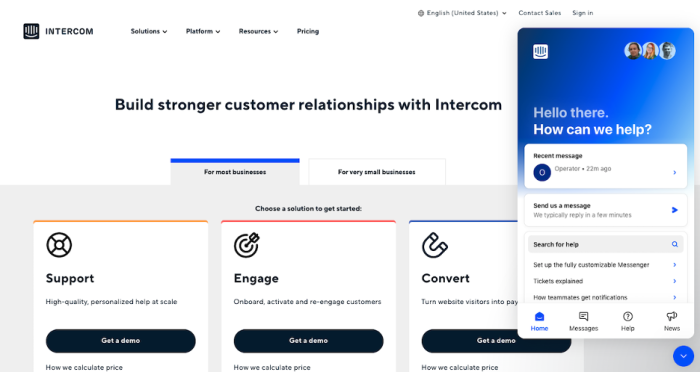
Even with intuitive platforms and landing pages, users might get lost. For a solution to a specific issue, they can always use Intercom’s in-app messaging. It not only connects users to an available agent but also offers a range of categorized help info for quick learning.
Why it works?
In-app messaging makes it easy for users to get tailored help and solve their issues with the help of a real agent
The additional resources for learning help users learn independently, striking a balance between pull and push strategies
Intercom’s non-invasive integration of in-app messaging makes it easy for users to get help if they need it without overwhelming them
6. Atlassian’s community forums for user-driven support (Pull help)
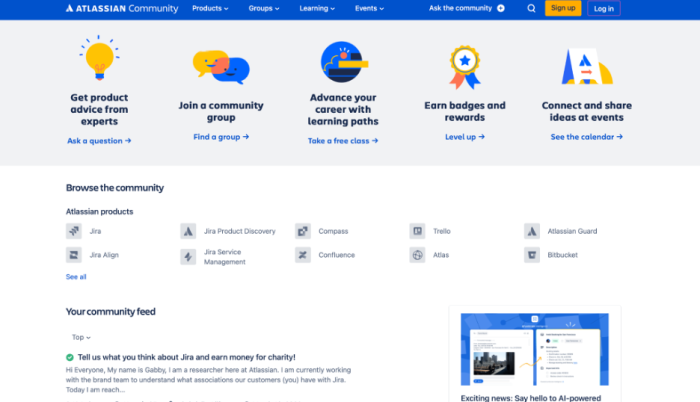
If you’ve run into a specific issue using a platform, other users likely have as well. Atlassian leverages this with a user-driven community forum, encouraging knowledge sharing and collaboration between fellow platform users. Users can join the community and browse products, as well as connect and share ideas.
Why it works?
Atlassian’s community forum offers a wide range of expertise by different professionals, including developers, administrators, and end-users, for a broad spectrum of insights
The Atlassian community forum encourages continuous learning, keeping users well informed on product updates, best practices, and discussions
This forum acts as a comprehensive knowledge base, including insights and archived discussions for common problems, solved both by users and the Atlassian team
7. Chameleon’s interactive product tours (Push help)
Chameleon provides users with interactive tours, guiding you through your product’s features and functionalities. These no-code on-brand UX patterns not only help users get contextual help but also let them navigate your product seamlessly and adopt your core features along the way.
Why it works?
Chameleon’s interactive product tours let companies tailor product tours to your user’s preferences, ensuring they get personalized and contextual support
Includes multiple UX elements like banners, lightboxes, slideouts, and more, for an engaging onboarding and push help experience
User completion metrics let you see if users are completing tours and benefiting from your push help strategy
8. Google’s in-app guidance for new features (Push Help)
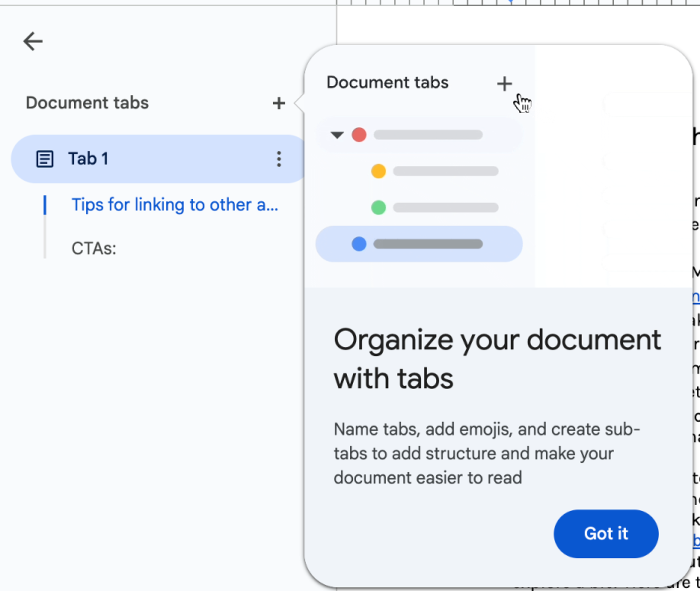
Whenever Google Docs adds new features, they’re sure to include quick in-app guidance complete with a mini demonstration. These non-invasive tooltips quickly describe the new feature, what it does, and how it helps the user.
Why it works?
Timely and relevant, Google’s tooltips give users contextual information as soon as a new feature appears, eliminating any confusion users may have
Quick and clear demonstrations show users how the feature works, providing a concise learning experience without the user needing to test for themselves
Google’s non-invasive tooltips are designed to be subtle and minimally disruptive, only noticeable if the user needs to use document tabs
6 Best practices for implementing push and pull help strategies
Implementing push and pull strategies for your customers is like a balancing act moving toward customer satisfaction. To ensure you don’t tip over and leave your users in their lurch, we’ve compiled the six best practices for implementing push and pull strategies:
Segment users for targeted help: Identify different user groups based on their needs and expertise to deliver relevant and personalized content
Be timely with push help: Provide notifications and prompts at the right time to reduce users’ frustration while guiding them through your product. Make sure to use analytics to track user behavior and determine key points where they need push help; otherwise, you’ll leave them confused while using your product.
Provide clear, accessible pull help resources: Your guides and FAQs need to be well-organized and plain sight so users can find and use them and solve their problems independently.
Maintain a balance to avoid overload: Always provide a mixed balance of push and pull to avoid overwhelming users. While users should have information like FAQs and help centers to solve problems independently, they should also benefit from your proactive guidance with tooltips and in-app notifications.
Use automation for consistency: Automated tools like triggered messages and chatbots allow for immediate support across all your product’s touchpoints, helping you minimize delay while ensuring a reliable help system.
Encourage feedback to improve help systems: You won’t know if your help system is working unless you collect and apply user feedback. Consider surveys, feedback forms, and embedded rating options to identify gaps, determine pain points, and refine your push and pull help systems to perfection.
Optimize in-app user support for better onboarding
Teaching to different levels of expertise (and interest) is complicated.
Having both push and pull kinds of help available has proven incredibly helpful for Chameleon. That's why we use a lot of tools to help us do it. The one thing these products have in common is they're all tailored to the individual user's experience. We want to acknowledge that each user is unique and provide them the experience they need.
By segmenting your push and pull help tools based on that user's behavior and attributes, and then providing actionable help, you'll empower them to be successful with your product.

